Good morning and happy Remembrance Day! I will be taking a moment of silence to think about the many veterans and active-duty military members who have touched my life and those around this morning and I hope that you will too.
Last month I promised that I would continue to talk about Quebec Comics after “setting the table” regarding what I called “La Grande Noirceur of Canadian Comics.” Unfortunately, I will have to defer this until next month. No one likes a “bait and switch,” and I want to offer all of my readers an apology. October caught me off guard and I ended up being far busier than I expected as a result of my commitments to Hal-Con, the Halifax Record Fair being postponed as a result of Hurricane Dorian and spending time appraising a comic book collection that was destroyed during the hurricane. Since French is something I struggle with, I decided to wait until (at least) December so that I can give the topic the proper treatment that it deserves. There is no room for “phoning it in” when trying to champion Canadian comics.
Since a good chunk of my month has been spent getting ready for the Halifax Record Fair (the first time that my wife and I have ever attended such an event as vendors), I started to think about a collecting strain that Dan, Victor and I have looked at off and on over the past few years: that is, the connection between Canadian Silver Age comics and vinyl records. It is a loose, disconnected cross-over collecting strain that does not include a large amount a material (at least insofar as what we have been able to uncover), but the material in question can be quite difficult to source and there is enough of it to warrant discussion.
For the most part, the connection between Silver Age Canadian comics and vinyl records involves comic books being inserted with records. There are also a couple of albums that were inspired by or related to an established comic series and at least one example of a band publishing its own comics separately (specifically, the seminal Vancouver punk band D.O.A. published two issues of its own comic called Bazooka Comiks). Finally, famous Canadian sound poet and occasional comic creator bpNichol released two albums with his sound poetry act The Four Horsemen in the 1970s. Today, however, I am going to stick with albums that had direct connections to specific comic books.
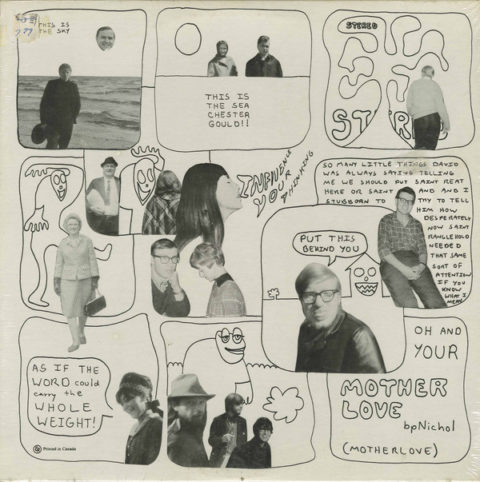
For the most part, the connection between Silver Age Canadian comics and vinyl records involves comic books being inserted with records. There are also a couple of albums that were inspired by or related to an established comic series and at least one example of a band publishing its own comics separately (specifically, the seminal Vancouver punk band D.O.A. published two issues of its own comic called Bazooka Comiks). Finally, famous Canadian sound poet and occasional comic creator bpNichol released one full length solo album of sound poetry. He also released two albums with his sound poetry act The Four Horsemen in the 1970s. Today, however, I am going to stick with albums that had direct connections to specific comic books.
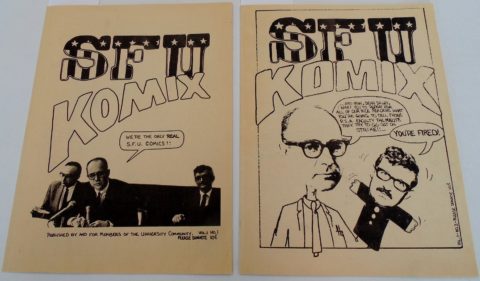
Given that vinyl record collecting and comic book collecting coalesced in some ways as part of the counterculture movement of the late-1960s, it makes sense that the first instances of this occurred during this era. However, there are not as many examples of comic book record inserts from this era as I initially anticipated. What is particularly interesting about this is that the two Underground Comix record inserts that we have uncovered predate 1969’s SFU Komix, which John Bell suggests is the earliest underground comic published in Canada in his book Invaders from the North (p. 108).
Perhaps the earliest example of a Canadian album including a comic book insert is the 1968 album Home Grown Stuff by Vancouver psychedelic rock band Mother Tuckers Yellow Duck, which features cover art by Don Grant. The first pressing of this album includes an insert by Grant that reprints part of his Kazonk Komix (part of which also appears a year or two later in an issue of the American series Yellow Dog from The Print Mint).
We have never seen the comic insert from Home Grown Stuff and are only aware of its existence because it is mentioned on the back cover of the first print of the album, which was self-produced under the label “Duck Records.” Its 1969 reprint from Capitol Records maintained Grant’s cover art but no longer included the comic insert. What complicates matters is that over the past decade vinyl collecting has increased dramatically and obscure Canadian psychedelic rock albums can fetch incredible sums at market. The Capitol reissue tends to sell for $100 CAD or more and, based on sales from a decade ago, an original press with the comic insert could achieve thousands in today’s market.
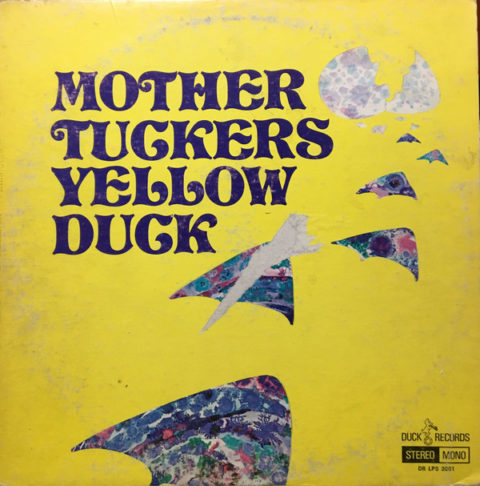
There is a second comic book released in 1968 that is connected to the world of vinyl record collecting that has also given us fits in terms of trying to research it. In the mid to late 1960s, an experimental and spoken word act led by poet Blake Parker and composer John Mills-Cockell called Intersystems released three albums. Their final album, 1968’s Free Psychedelic Poster Inside did not include a comic book but had one associated with it.
The album serves as the soundtrack to their art installation held in 1968 at their Mind Excursion Centre in Montreal. The installation also included a store called “The Mindex Department Store,” where attendees could purchase Intersystems merchandise. One of the items made exclusively for the installation and only sold at The Mindex Department Store was a comic book called Comic Power. The comic book is so rare that we have never seen it come up for sale and it is no wonder that John Bell was unaware of its existence when he wrote Invaders from the North. The only reason that we learned about it was due to Victor’s incredible research instincts. In fact, Victor learned about the comic only because it had been reissued in 2015 as part of an Intersystems limited edition box set that remastered the original records and includes a significant amount of bonus material. The box set was released in Italy by Alga Marghen and only had a print run of 500 copies. The fact that Victor learned about Comic Power is a testament to his keen eye and patience as a collector and researcher.
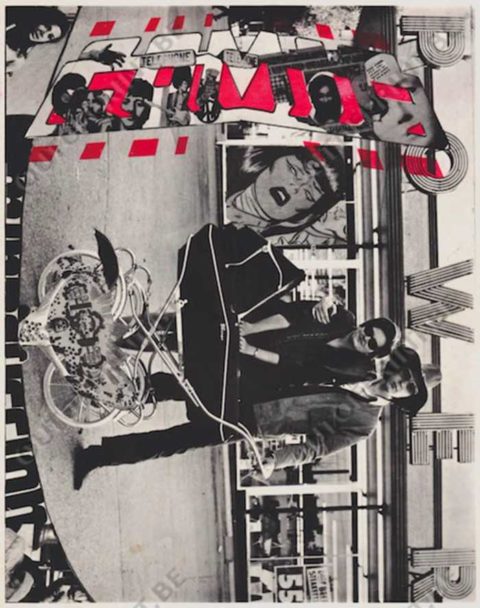
I do have a PDF file of the original Comic Power comic, which is actually an example of Italian fumetti (photo comics). As such, Comic Power may be the very first example of a Canadian photo comic ever published. Like many obscure Canadian vinyl records from the 1960s, Intersystems’ three albums can fetch hundreds of dollars at market. Likewise, the Italian limited-edition box set is now out of print and sells for well over $100 CAD (if you can find one). Until an original copy of Comic Power comes to market, it is impossible to know how much it might be worth.
Despite what almost certainly could have been a prolific era of comic book inserts in vinyl records, there is actually very little evidence that anything else appeared in the psychedelic and avant-garde vinyl releases of the 1960s and early 1970s. In fact, the next comic insert that we have been able to identify appears ten years later, in 1978.
Robert Connolly’s Plateau is a prog-rock album that sounds heavily inspired by Erich Von Däniken’s Chariots of the Gods. The album features classic prog-rock tropes about aliens and epic battles. The Hamilton, Ontario native would later become a well-known film and television director/producer for his programs Passport to Adventure and Timeless Places that aired on Canadian television in the 1990s. These travelogues showcased lost civilizations and technology, the Pyramids and other genre staples. What makes his album Plateau of interest to Canadian comic collectors is that it included an 8-page comic book adaptation of the album itself. These used to be quite rare and are still difficult to acquire. However, as vinyl collecting has increased more copies of the album have come to market with the comic insert intact. A few years ago, copies of Plateau with the comic insert sold for as much as $50 CAD on eBay and Discogs. Today, a patient collector can find them for as little as $20. Nevertheless, this album did not have a wide release and was one of only a few albums produced by Tube Records in 1978 and 1979.
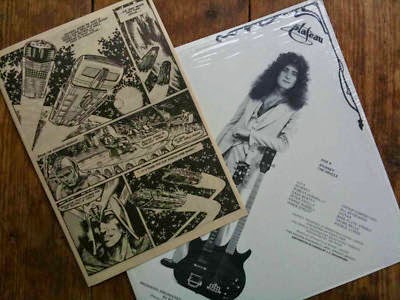
By the early 1980s, we start to see a few more albums with comic book connections. In 1981, Métis folk singer Don Freed released his album Off in All Directions through Bushleague Records. Freed was born in British Columbia, but was raised in Saskatoon. His Canadian-centric songs were popular in the prairies throughout the 1980s. Despite starting his career in the mid-1960s and even appearing in a documentary with Johnny Cash in 1969, Freed did not release an album until 1981. The reason why Off in All Directions is significant for Canadian comic collectors is that first pressings of the album included a comic book by Saskatoon’s legendary Dave Geary called Scratchatune Comics. The word “scratchatune” comes from Freed’s music publishing company and is itself a play on both men’s hometown, Saskatoon. The comic itself is an illustrated adaptation of the songs found on the album. Later releases of the album did not include the comic, which can be quite hard to find today. It is unknown how many copies of the album were released with the comic and when copies do come up for sale, they tend to sell in the $50 CAD range. Otherwise, Freed’s album tends to sell for around $10 CAD.
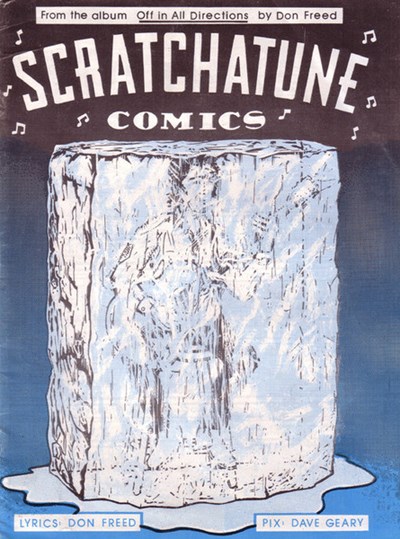
Around the same time, Les Éditions Héritage was publishing a comic series in Quebec called Capitaine Cosmos. The series ran for six issues from 1980 to 1981, with the first three issues being reprinted as a jumbo comic at some point during the series’ run. Unlike the other comics featured in this column, Capitaine Cosmos was a multimedia enterprise derived from a live-action television series quiz show (called Les Satellipopettes) for elementary school students that ran on Télé-Métropole (now TVA) in Quebec from 1975 to 1985. The name of the series is actually a clever bit of wordplay: “Satellipopettes” is a reference to the French term “saperlipopette,” which roughly translates to “goodness me” in English.
The television series starred Claude Steben as Capitaine Cosmos as its host. Children were split into teams of two and were asked increasingly difficult trivia questions. Participants who answered correctly were given pieces to build their team’s robot and the first team to complete their robot won. The short-lived comic series featured Capitaine Cosmos (in the likeness of Steben’s character) fighting aliens, robots and other staple villains of the science fiction genre.
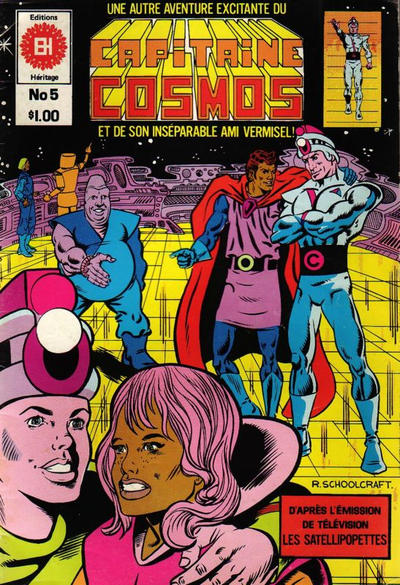
In addition to the television and comic series, Steben released four LPs under the Les Satellipopettes name throughout the early 1980s. The albums are: Les Satellipopettes; Capitaine, Capitaine; Le Drapeau Du Bonheur; and Les Satellipopettes S’amusent. All of these items were directed towards children and the character was a ubiquitous part of early 1980s childhood among the Quebecois.
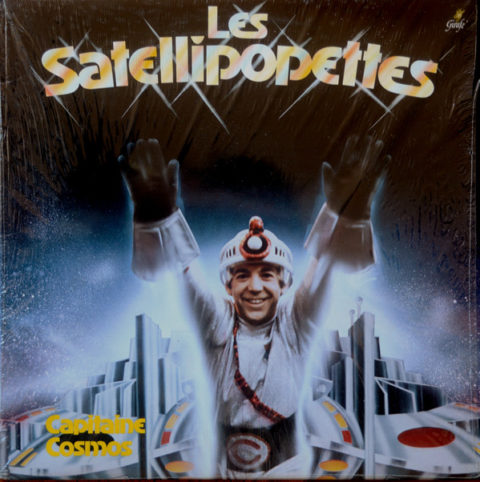
Steben continued to be a popular entertainer in Quebec after the television series ended and Les Satellipopettes launched the careers of his children, Karyne and Sarah (The Steben Twins), who appeared in the series beginning at age six. The twins would go on to become some of the best-known trapeze artists in the world, performing as a featured act for Cirque du Soleil.
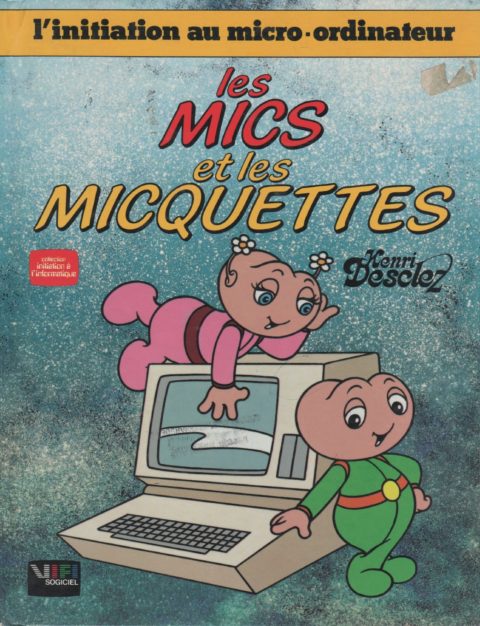
The company that released the four Capitaine Cosmos records, Giraffe, also released albums related to another series of bandes dessinées that was published in album format during the 1980s, Les Mics et Les Micquettes. The series was created by Belgian comic artist Henri Desclez who moved to Quebec in 1976 and became a mainstay at Les Éditions Héritage, working on original series such as Nic et Pic and Monsieur Tranquille. The album format comics were published by a couple of different companies during the decade. Today these bandes dessinées and the associated records published by Giraffe can be difficult to find outside of Quebec and New Brunswick, but when they are available, they tend to sell for around $10 each.
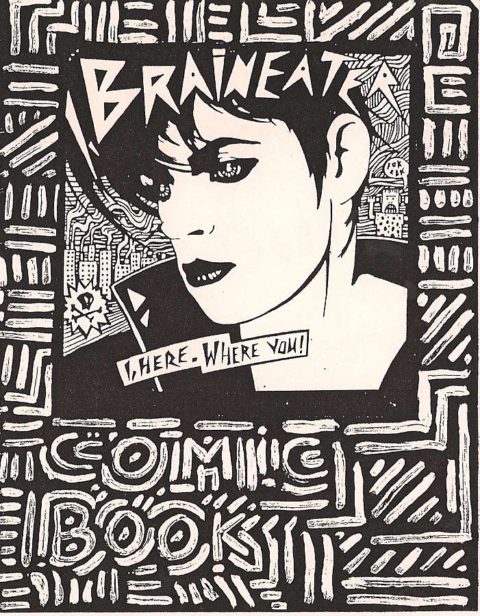
As the 1980s continued, at least one more band released comic book inserts with their albums. I mentioned Jim Cummins and his band, I, Braineater, in my column about the “Lord Larry mystery” earlier this year. Despite being a talented musician who was affiliated with the pioneering industrial band, Skinny Puppy, Cummins is probably best known today for his artwork. Both of the albums that were released by I, Braineater included comic book inserts. The first album, 1983’s I, Here. Where You!, included a comic book insert called Comic Book that featured the same cover artwork as the album itself. The second album, 1985’s Artist Poet Thief, included an untitled comic insert that is sometimes called Edge by collectors (named for the first song on the album). Both albums can be difficult to track down and the comic is almost always missing.
A final connection between Canadian Silver Age comics and vinyl record collecting that we have identified comes from the east coast. From 1975 to 1977, Paul “Moose” MacKinnon published three issues of the comic series Old Trout Funnies, launching what would become an Atlantic Canadian comedy institution for the next two decades: The Cape Breton Liberation Army (CBLA). MacKinnon’s original comics are nearly impossible to find today to the extent that I have never seen original copies in person or online for sale. Thanks to the work of MacKinnon and Dr. Ian Brodie the comics were reprinted in their entirety in 2015 by Cape Breton University Press. Additionally, MacKinnon donated materials to Cape Breton University, which has original copies of the comics in its archives.
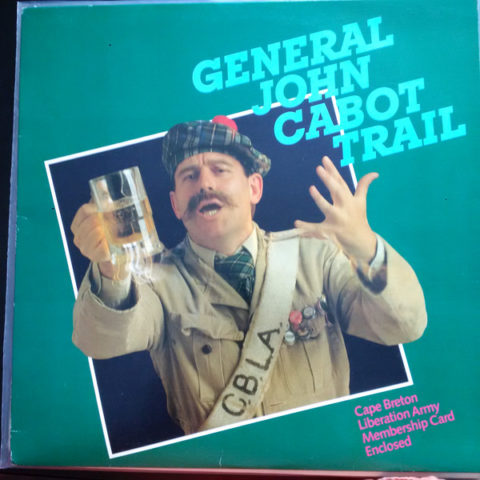
Although Old Trout Funnies launched the CBLA, the comedic “separatist movement” is now best associated with the character General John Cabot Trail (who was portrayed by Dave Harley, who passed away in 2012). Harley travelled the country performing stand up comedy in character throughout the 1980s and 1990s proclaiming, “Down with da causeway!” (in reference to the Canso Causeway, which connects Cape Breton to the mainland). Harley continued to appear as the character throughout his life and released two comedy albums in the late 1980s. The first album, General John Cabot Trail was released in 1987 by A&M Records and features his most famous jokes. The album even included a CBLA membership card. The second album, called The General, appeared on cassette only in 1989.
The connections between Canadian Silver Age comics and this booming era of vinyl record collecting are myriad. This is a small, niche collecting strain, but sourcing comic book inserts and comics related to vinyl records has proven to be a daunting task. From time to time, Dan, Victor and I uncover information about a comic insert that we were previously unaware of. As such, this should not be considered an exhaustive list of what was produced during this era and I suspect that there are more comic inserts and related materials out there. Perhaps you have knowledge of something I have missed. If so, please share it in the comments section.

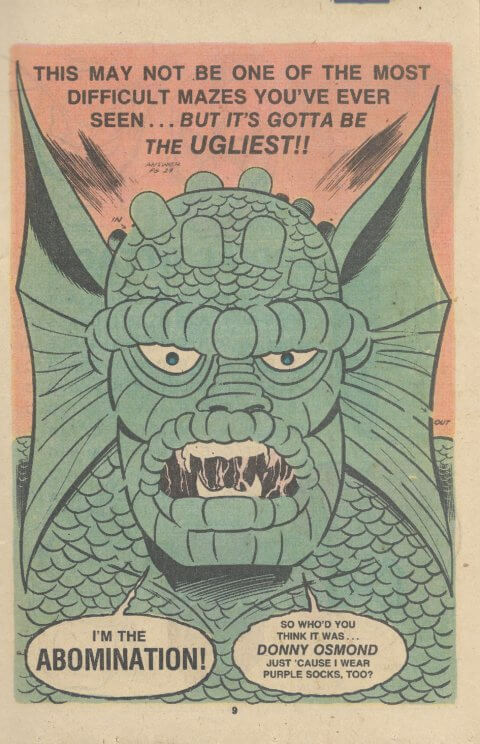
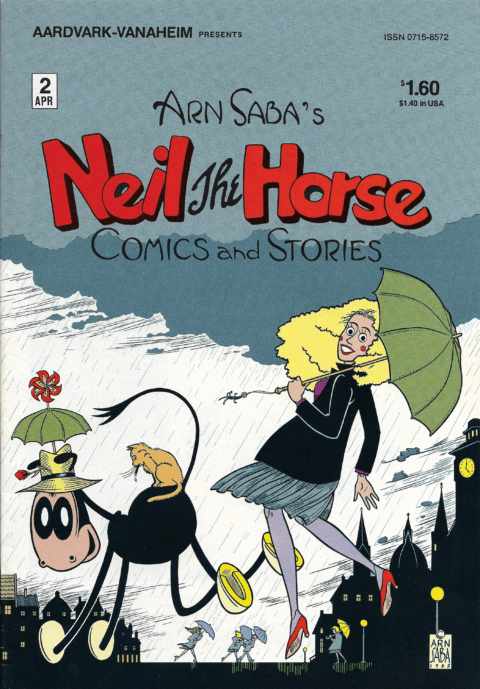
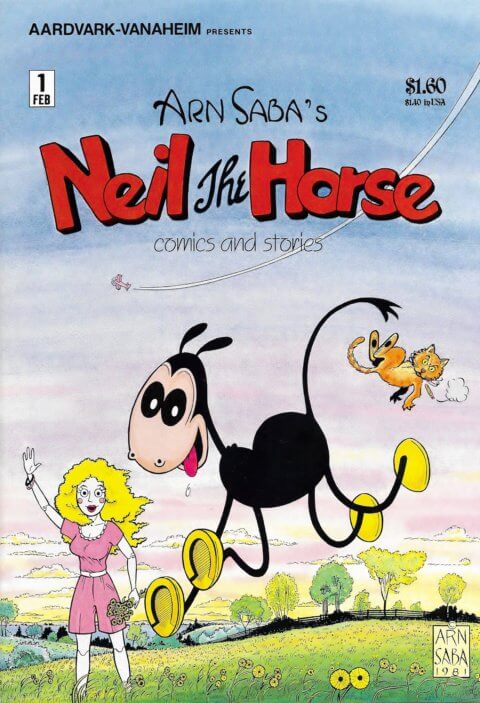
Another informative piece, brian.
I hope the damaged comic collection, you mentioned, isn’t yours. Were any major comics lost?
Thanks, Tony. The damaged comic collection was not ours. We were hired to assess a collection for insurance purposes of mostly bronze, copper and modern age books that did not have any really expensive books, but was sizeable (thousands of books) and will take time, effort and quite a bit of money to replace.
I shudder every time I hear of a comic collection being damaged, or even worse, destroyed; especially if there is a chance that it’s an irreplaceable collection of unique items, not just comics.
I wonder how many incredibly rare comics have been destroyed by bad weather, especially in the U.S., where they have such extreme weather events such as wildfires, tornadoes, flooding, hurricanes etc. How many great comics have succumbed in California, this year alone?